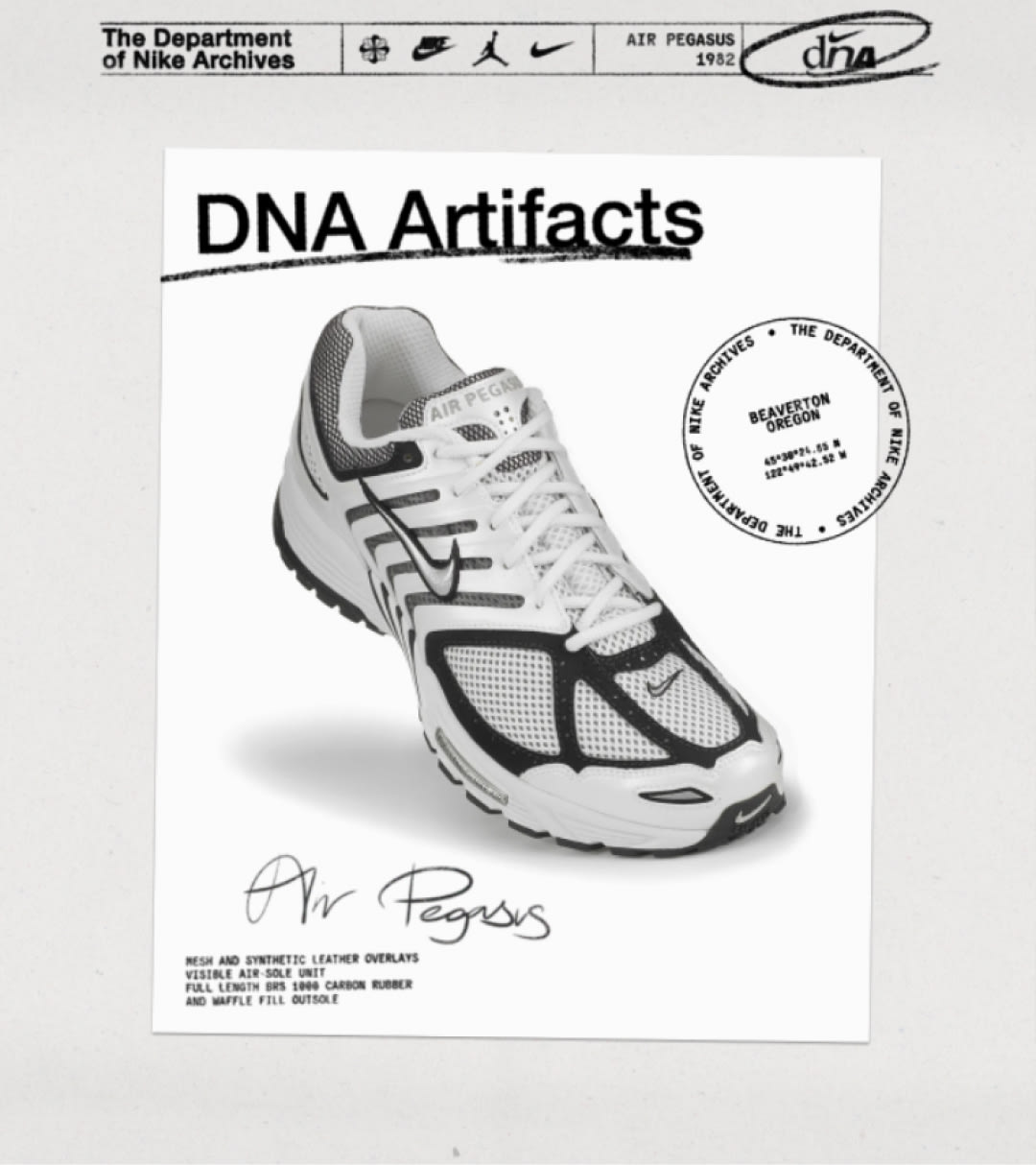
DNA Artifacts
Pegasus
Birthed in 1982, Nike’s Pegasus franchise has long been a fan-favorite running staple.
Rooted in Nike’s relentless pursuit of innovative running footwear, the journey behind the Pegasus began with the goal of serving the everyday runner through versatility and affordability. While the Tailwind helped bring Nike Air cushioning to life and changed the running footwear landscape forever, Nike knew it needed to create dimension with something that served a broader range of athletes.



It began with a concept known as the “Air Wedge Trainer” that was developed by former Nike CEO Mark Parker, which was essentially a Nike Internationalist upper and outsole with a midsole that housed an “Air Wedge” in the heel.




The shoe would perform well in early wear testing and showed signs of future promise by improving shock absorption by nearly 12%. It also kept cost at a minimum with an Air unit that was only a third of the size of the full-length Air unit used in the Air Tailwind in 1978, thus ensuring an affordable option for everyday runners.






Once it was assured the wedge concept had potential, Mark Parker would go on to design the Pegasus upper, and the icon was born. Since then, we’ve seen countless iterations of the iconic Pegasus, ranging from the early days with versions featuring just heel Nike Air cushioning, to more modern takes featuring Duralon and visible Air cushioning for core runners across the globe.






Today, it’s a franchise that has long been recognized as Nike’s most consistent and most popular running franchise of all-time. It has won awards recognizing its innovation and success it brought to countless runners, and it has also had moments where it nearly fell short of expectations, but it has always come back to give the running community exactly what it needs in an everyday running shoe from Nike.